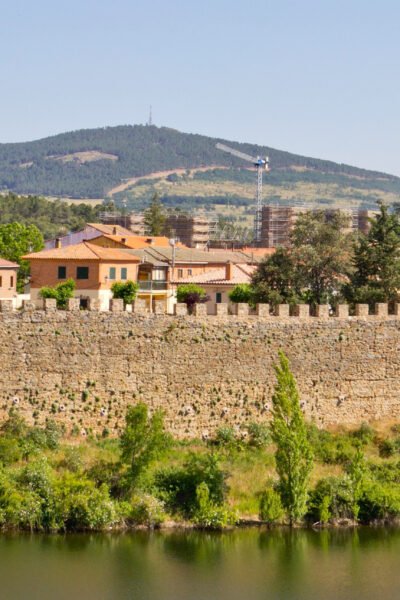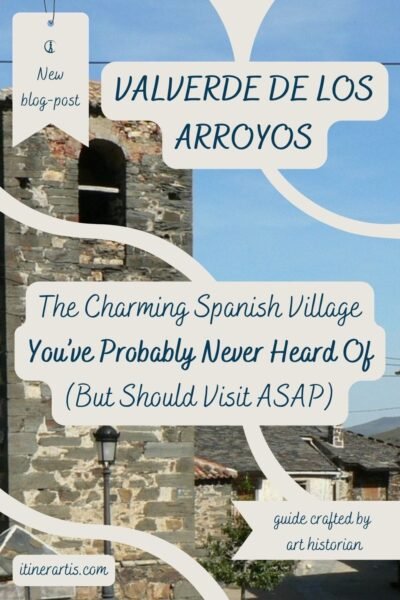Zuheros (Córdoba, Spain): Everything You Didn’t Know You Needed from a White Village in the Sierras Subbéticas
There’s a kind of silence you only find in places built on stone and time. In Zuheros (Córdoba, Spain), that silence isn’t empty—it’s layered. It carries the rustle of olive trees, the echo of hooves on cobbled paths, and the weight of stories carved into cliffside walls. Most travelers pass through Andalusia chasing cities or coastlines. But if you let your map breathe a little, you’ll find this small village where the rhythm slows—and something essential rises to the surface.
![General view of Zuheros, Córdoba, Spain [Photograph]. Credit: Francisco de Asís Alfaro Fernández. Licensed under CC BY-SA 4.0.](https://itinerartis.com/wp-content/uploads/2025/04/9.-General-view-of-Zuheros-Cordoba-Spain-Photograph.-Credit-Francisco-de-Asis-Alfaro-Fernandez.-Licensed-under-CC-BY-SA-4.0.jpg)
Here, at the edge of the Sierras Subbéticas, limestone cliffs cradle a village that has never traded beauty for bustle. A medieval tower rises above tiled roofs. A prehistoric cave opens like a forgotten book. And the streets—narrow, irregular, deliberate—are still walked at the pace of conversation. Zuheros Castle isn’t just a sight. It’s a vantage point over centuries of resilience and a landscape shaped by light and limestone.
If you’re searching for things to do in Zuheros, Spain, begin by forgetting the checklist. Wander instead. Let your footsteps be guided by curiosity—toward a door left ajar, a patch of shadow beneath a fig tree, the scent of pressed olives drifting from a nearby mill. The most unforgettable moments here don’t announce themselves. They unfold slowly: in the hush of a cave where Paleolithic hands left marks of meaning, or from the ramparts of Zuheros Castle, where the horizon seems to speak in layers—of conquest, of quiet, of continuity…
Post last updated on April 3, 2025 (originally published on April 17, 2025) by Roberta Darie.

- Where Is Zuheros (Córdoba, Spain)? And Why Haven’t You Heard of It Yet?
- Is Zuheros Worth Visiting? A Resounding Yes (Here’s Why)
- What to See in Zuheros (Córdoba, Spain): The Village, the Castle, the Cave & Beyond
- 1. Zuheros Castle: A Fortress Carved from Stone and Memory
- 2. Cueva de los Murciélagos: The Cave Where Time Drew on the Walls
- 3. The Archaeological Museum: A Time Capsule Tucked Beneath the Castle
- 4. Iglesia de los Remedios: A Simple Church with a Story to Tell
- 5. The Village Itself: A Labyrinth of Light and Lime
- Activities in and Around Zuheros (Córdoba, Spain): Where Nature and Culture Meet
- When to Visit Zuheros (Córdoba, Spain): Seasons of Silence and Celebration
- How Long to Stay in Zuheros (Córdoba, Spain): One Day Isn’t Enough, But It’s a Start
- Final Thoughts: Zuheros (Córdoba, Spain) Is Not Just a Place—It’s a Pace
“Every landscape is the gift of a presence.”
— John O’Donohue
![Neolithic Pottery from Cueva de los Murciélagos, Zuheros (Córdoba, Spain) [Photograph]. Credit: ANAGSPC. Licensed under CC BY-SA 4.0.](https://itinerartis.com/wp-content/uploads/2025/04/8.-Zuheros-Castle-Cordoba-Spain-Photograph.-Credit-Francisco-de-Asis-Alfaro-Fernandez.-Licensed-under-CC-BY-SA-4.0.jpg)
Where Is Zuheros (Córdoba, Spain)? And Why Haven’t You Heard of It Yet?
Zuheros (Córdoba, Spain) doesn’t so much appear on the map as it lingers between lines. At the meeting point of limestone and memory. It’s a white village folded gently into the foothills of the Sierras Subbéticas, where jagged cliffs cradle olive groves and shepherd paths still thread the landscape like veins of time.
Although it feels far from anywhere, it’s surprisingly close. From Córdoba, it’s just over an hour by car (75 km / 46 miles); from Granada, about ninety minutes (120 km / 75 miles). Even Seville, with its wide avenues and orchestral pace, is only two hours away (150 km / 93 miles). But distance, here, isn’t measured in kilometers. It’s measured in tempo.
Perhaps that’s why you haven’t heard much about it. The Zuheros Castle doesn’t dominate Instagram feeds, and no souvenir shop blinks neon. But that’s its quiet triumph. It’s part of the list of Spain’s Most Beautiful Villages (Pueblos Más Bonitos de España)—not because it performs beauty, but because it never stopped being itself.
Is Zuheros Worth Visiting? A Resounding Yes (Here’s Why)
There’s a quiet depth to Zuheros (Córdoba, Spain) that resists being rushed. It’s not just the way the village clings to the rock, or how its streets seem drawn by hand rather than plan. Rather, it’s the feeling that the past has never fully left.
The hilltop that anchors Zuheros Castle has been inhabited since the Neolithic era. Traces of early life still whisper from the nearby Cueva de los Murciélagos, where red ochre paintings—over 30,000 years old—depict scenes of deer, human figures, and symbols we no longer understand. These caves were once both refuge and ritual space, their walls a living canvas of prehistoric imagination.
By the 1st century BCE, the Romans had arrived, integrating this corner of the Subbética into the fabric of Hispania Ulterior. They brought roads, farming systems, and the seeds of what would become a deep olive culture. Later, during the Islamic rule of Al-Andalus, the village’s strategic position atop a cliff was recognized and fortified. The original 9th-century castle—small but fierce—was part of a defensive network protecting the frontier of the Emirate of Córdoba.
After the Christian conquest in the 13th century, the town was absorbed into the Crown of Castile. Yet even then, it retained its hybrid soul. Arab cisterns, Gothic chapels, and Renaissance arches coexisted—none replacing the other, only layering stories.
To walk Zuheros today is to move through these layers slowly. You don’t just visit a site—you touch centuries. This, above all, is the answer to what to see in Zuheros, Córdoba: a village that doesn’t display its history, but lives within it.
![Mirador de la Villa, Zuheros, Spain [Photograph]. Credit: Jocelyn Erskine-Kellie. Licensed under CC BY-SA 2.0.](https://itinerartis.com/wp-content/uploads/2025/03/4.-Mirador-de-la-Villa-Zuheros-Spain-Photograph.-Credit-Jocelyn-Erskine-Kellie.-Licensed-under-CC-BY-SA-2.0.jpg)
What to See in Zuheros (Córdoba, Spain): The Village, the Castle, the Cave & Beyond
Of all the things to do in Zuheros, Spain, perhaps the most rewarding is simply to look closely. This is a village that reveals itself in layers—geological, historical, and human. From the stark cliffs that cradle Zuheros Castle to the hidden depths of ancient caves, every path leads to a story etched in stone or carried quietly in the rhythm of daily life. If you’re wondering what to see in Zuheros, Córdoba, begin with what endures: the architecture, the landscape, and the traces of those who came long before.
1. Zuheros Castle: A Fortress Carved from Stone and Memory
Rising directly from the limestone cliffs, the Zuheros Castle feels less like it was built and more like it grew from the rock itself. Its origin dates back to the 9th century, when the Moors fortified this strategic outcrop overlooking the Subbética frontier. Though modest in size, the castle’s location gave it formidable defensive power—watching silently over the olive-draped valleys of what is now the Sierras Subbéticas Natural Park.
What remains today are fragments—but meaningful ones. A reconstructed keep, stretches of wall, and the foundation of a once-complex network of towers and cisterns. From its highest point, the view is expansive. On clear days, you can see the soft undulations of the Córdoba countryside stretch for kilometers—reminding you that this place was once both shield and sentinel.
Yet Zuheros Castle isn’t impressive for its scale. It’s the way it disappears into the cliffside, how it anchors the village without dominating it. Walking its grounds, one feels the wind move through centuries of silence. The stones here have absorbed layers of history—Islamic rule, Christian reconquest, and centuries of village life unfolding in its shadow.
![Castillo de Zuheros, Córdoba, Spain [Photograph]. Credit: Juan Pablo Olmo. Licensed under CC BY 2.0.](https://itinerartis.com/wp-content/uploads/2025/03/5.-Castillo-de-Zuheros-Cordoba-Spain-Photograph.-Credit-Juan-Pablo-Olmo.-Licensed-under-CC-BY-2.0-1024x698.jpg)
2. Cueva de los Murciélagos: The Cave Where Time Drew on the Walls
Just beyond the village limits of Zuheros (Córdoba, Spain), the limestone opens its mouth to a different kind of history—one not written, but drawn. The Cueva de los Murciélagos — Cave of the Bats — is one of the most significant archaeological sites in Andalusia. Its chambers hold some of the oldest-known evidence of human presence in the region, dating back over 35,000 years.
Inside, time lingers in pigments and silence. The walls bear traces of Paleolithic art—simple but deliberate figures, hands, and animals rendered in red and black ochre. Alongside these images, archaeologists have uncovered bone tools, ceramic fragments, and burial remains that speak to the cave’s use not just as shelter, but as a sacred space for ritual and memory.
The descent is guided and secure, yet it still feels intimate. The air is cool, the light dim. Here, imagination meets evidence. It’s easy to picture a flickering flame casting shadows over hands painting deer onto stone—ancestors reaching, quite literally, for permanence.
![Cueva de los Murciélagos, near Zuheros, Córdoba, Spain [Photograph]. Credit: Nikater. Licensed under CC BY-SA 3.0.](https://itinerartis.com/wp-content/uploads/2025/04/10.-Cueva-de-los-Murcielagos-near-Zuheros-Cordoba-Spain-Photograph.-Credit-Nikater.-Licensed-under-CC-BY-SA-3.0.jpg)
3. The Archaeological Museum: A Time Capsule Tucked Beneath the Castle
A few steps from the base of Zuheros Castle, housed in a humble building near the tourist office, you’ll find a space that quietly holds the soul of the village. The Archaeological Museum of Zuheros (Córdoba, Spain) is not grand, but it doesn’t need to be. Like the town itself, it values depth over spectacle.
Inside, a curated selection of artifacts traces the human story here—from the Neolithic remains discovered in the nearby Cueva de los Murciélagos, to Roman ceramics, Moorish fragments, and tools used in olive farming for generations. The museum’s narrative isn’t linear, but layered—much like Zuheros itself. Each object is a clue, each label a doorway into lived experience.
Among the most compelling pieces are flint blades, bone needles, and funeral urns—everyday items that outlasted their makers. So, if you’re wondering what to see in Zuheros, Córdoba beyond its dramatic landscapes, this small museum offers an answer: history not as a monument, but as memory. Modest in scale, generous in meaning.
![Neolithic Pottery from Cueva de los Murciélagos, Zuheros (Córdoba, Spain) [Photograph]. Credit: ANAGSPC. Licensed under CC BY-SA 4.0.](https://itinerartis.com/wp-content/uploads/2025/04/1.-Neolithic-Pottery-from-Cueva-de-los-Murcielagos-Zuheros-Cordoba-Spain-Photograph.-Credit-ANAGSPC.-Licensed-under-CC-BY-SA-4.0.-.jpg)
4. Iglesia de los Remedios: A Simple Church with a Story to Tell
At the heart of Zuheros (Córdoba, Spain), the Iglesia de Nuestra Señora de los Remedios stands with quiet dignity. Its whitewashed façade and modest bell tower blend into the village as if grown from the same stone. But step inside, and the stillness takes on a different tone—one shaped by devotion, tradition, and time.
The church was rebuilt in the 16th century on earlier foundations, and its single nave reflects the architectural simplicity typical of rural Andalusian parishes. Inside, the atmosphere is hushed, punctuated by flickering candles and the scent of old wood and wax. During local festivals—especially the patronal feasts in early September—the church becomes the emotional center of village life, with processions winding through the narrow streets.
![Corner of Zuheros with the Church of Nuestra Señora de los Remedios in the Background [Photograph]. Credit: Julen Iturbe-Ormaetxe. Licensed under CC BY-SA 2.0.](https://itinerartis.com/wp-content/uploads/2025/04/6.-Corner-of-Zuheros-with-the-Church-of-Nuestra-Senora-de-los-Remedios-in-the-Background-Photograph.-Credit-Julen-Iturbe-Ormaetxe.-Licensed-under-CC-BY-SA-2.0.jpg)
5. The Village Itself: A Labyrinth of Light and Lime
Wandering through Zuheros (Córdoba, Spain) is a journey made not with maps, but with senses. The village is a labyrinth of whitewashed homes, cobalt doors, iron balconies, and sudden bursts of geranium red. Cobbled streets slope and twist, inviting aimless exploration.
There’s no single path to follow—only moments to collect. Photograph alleyways. Taste local goat cheese. Chat with an artisan. Or sit in the plaza and let the shadows tell time. Among the truest things to do in Zuheros, Spain, simply being here might be the most meaningful of all.
![Street in Zuheros and Sierra Subbética, Andalusia [Photograph]. Credit: Jocelyn Erskine-Kellie. Licensed under CC BY-SA 2.0.](https://itinerartis.com/wp-content/uploads/2025/04/3.-Street-in-Zuheros-and-Sierra-Subbetica-Andalusia-Photograph.-Credit-Jocelyn-Erskine-Kellie.-Licensed-under-CC-BY-SA-2.0.jpg)
Activities in and Around Zuheros (Córdoba, Spain): Where Nature and Culture Meet
In Zuheros (Córdoba, Spain), activity doesn’t mean acceleration. It means immersion. Here, movement unfolds slowly—on footpaths lined with thyme and stone, in conversations over olive oil, and through seasonal rituals that root the village to its land and time.
One of the most rewarding things to do in Zuheros, Spain is to walk the Via Verde de la Subbética, a reclaimed railway line that stretches across olive country. Just outside the village, this scenic route passes through tunnels, bridges, and open landscapes. Whether you hike or cycle, the terrain is gentle, the views vast, and the pace yours to choose. For more rugged trails, the Sierras Subbéticas Natural Park offers climbs with sweeping views and occasional sightings of griffon vultures tracing circles above.
Closer to the village, you’ll find olive oil mills—many family-run—where the region’s liquid gold is still produced using traditional methods. A tasting here isn’t just about flavor. It’s about legacy, weather, soil, and centuries of hands in the harvest.
Throughout the year, local ferias bring music, dance, and food into the streets—especially in early autumn. And for those who crave a broader view, consider a short hike to a nearby mirador or a half-day visit to Luque, just 8 km (ca. 5 miles) away.
![Former railway viaduct and olive groves near Zuheros, Andalusia [Photograph]. Credit: Hugh Llewelyn. Licensed under CC BY-SA 2.0.](https://itinerartis.com/wp-content/uploads/2025/04/4.-Former-railway-viaduct-and-olive-groves-near-Zuheros-Andalusia-Photograph.-Credit-Hugh-Llewelyn.-Licensed-under-CC-BY-SA-2.0.jpg)
When to Visit Zuheros (Córdoba, Spain): Seasons of Silence and Celebration
The rhythm of Zuheros (Córdoba, Spain) changes with the light. In spring, wildflowers spill over the stone paths and the Sierras Subbéticas bloom with color. This is one of the best times to visit Zuheros—mild temperatures, bright days, and the village’s fiestas patronales bringing music and processions to the streets.
Autumn paints the olive groves in softer tones. The air sharpens just enough to make hiking along the Via Verde or climbing up to Zuheros Castle even more rewarding. It’s harvest season, too, and the local olive mills hum with quiet activity. For those seeking a quieter visit and clear trails, this is ideal.
Summer is hot, yes—but dry and still. Early mornings and late evenings become golden hours, especially from high viewpoints. And in winter, the village folds into stillness. Fog drapes the cliffs, and firelight flickers behind shuttered windows. Fewer tourists, more solitude.
If you’re wondering about the weather in Zuheros or the best time to visit, it depends on what you’re seeking: celebration or silence. This village offers both.
![View of Zuheros Castle and Village, Zuheros (Córdoba, Spain) [Photograph]. Credit: Luis Rogelio HM. Licensed under CC BY-SA 2.0.](https://itinerartis.com/wp-content/uploads/2025/04/7.-View-of-Zuheros-Castle-and-Village-Zuheros-Cordoba-Spain-Photograph.-Credit-Luis-Rogelio-HM.-Licensed-under-CC-BY-SA-2.0.jpg)
How Long to Stay in Zuheros (Córdoba, Spain): One Day Isn’t Enough, But It’s a Start
Many arrive expecting a quick detour—one of those things to do in Zuheros, Spain between Córdoba and Granada. It’s one of the best day trips from Córdoba. But one day barely scratches the surface.
To truly absorb the place, stay at least two nights. Take the time to visit Zuheros Castle, the cave, the museum, and the olive mills without haste. Wake early to watch the mist rise over the cliffs. Linger in a quiet plaza at dusk.
![General View of Zuheros (Córdoba, Spain) [Photograph]. Credit: Francisco de Asís Alfaro Fernández. Licensed under CC BY-SA 4.0.](https://itinerartis.com/wp-content/uploads/2025/04/2.-General-View-of-Zuheros-Cordoba-Spain-Photograph.-Credit-Francisco-de-Asis-Alfaro-Fernandez.-Licensed-under-CC-BY-SA-4.0.jpg)
Final Thoughts: Zuheros (Córdoba, Spain) Is Not Just a Place—It’s a Pace
You don’t come to Zuheros (Córdoba, Spain) to collect sights. You come to remember how it feels to move slowly. To hear footsteps echo in an empty alley. To follow the curve of a stone path without needing to know where it leads.
There are many things to do in Zuheros, Spain—from exploring Zuheros Castle to tracing prehistoric marks in the cave walls. You’ll find answers to the practical question of what to see in Zuheros, Córdoba scattered throughout the village: a church bell chiming the hour, an artisan shaping olive wood, a ruined archway clinging to memory.
But the truth is, the village’s value isn’t measured in monuments. It’s in the way it recalibrates your sense of time. Everything here—history, landscape, human rhythm—asks you to pause. And in that pause, something begins to shift. Maybe that’s the gift of Zuheros. Not a single view or moment, but a way of seeing. One that lingers long after you’ve left, like light on limestone or a story told softly enough that you lean in to hear it.




